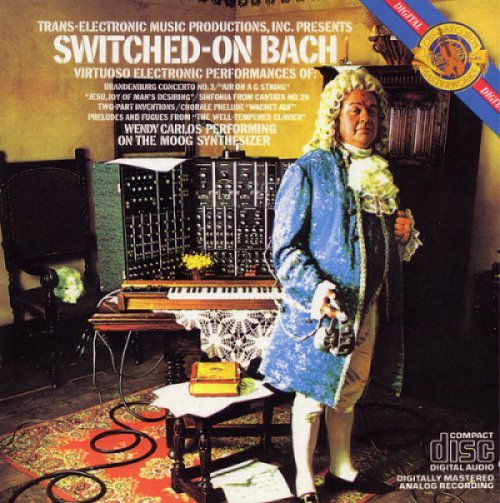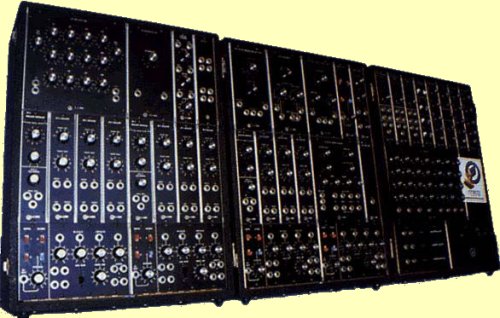Switched on Bach
by Andy Boyd
Today, guest scientist Andy Boyd makes music. The University of Houston presents this series about the machines that make our civilization run, and the people whose ingenuity created them
It was the first classical music recording ever to go platinum, a feat requiring the sale of over one million copies. The artistry was exquisite; the composer an acknowledged master. Yet, the recording succeeded because it took an engineering oddity into the musical main-stream.
Released in 1968, Switched-On Bach brought Bach to life on a Moog synthesizer. The album emerged during a period in which electronic music was desperately searching for direction. The sixties counter-culture movement was in full swing, giving rise to electronic music that reflected the unrestricted freedom of the era — groovy, but not especially musical.
At the same time, academic composers were creating music so radically avant-garde that even the most musically-literate listeners could make sense of it. Sine waves, tape loops, and recordings of everyday sounds dominated the world of serious electronic music, and created a hostile environment for composers and musicians who wanted to use electronic instruments in a more traditional manner.
Wendy Carlos, who was born Walter Carlos but later changed her name — and gender — experienced this hostility first hand when she recorded Switched-On Bach. A music and physics student at two Ivy League universities, "Carlos encountered 'alienation and condescension' [from] both students and faculty [for her] traditional musical values." Sensing that electronic instruments had developed a bad reputation, Carlos reasoned that if people were exposed to more traditional music they would come to appreciate what electronic music had to offer. The recording industry agreed, with reviewers predicting that Switched-On Bach "would release electronic music from sounding like 'some obnoxious mating of a cat fight and a garbage compactor.'"
As word spread about the album, musicians from every musical genre took notice. Switched-On Bach became essential listening for anyone versed in electronic music. The album sparked interest in synthesized music from many accomplished popular musicians, including Keith Emerson and Stevie Wonder.
Imitation is the sincerest form of flattery, and the commercial success of Switched-On Bach gave rise to literally hundreds of imitators, includingSwitched-On Bacharach, Chopin a la Moog, Switched-On Nashville Country Moog, and even Switched-On Santa. Carlos herself went on to make many more recordings, including scores for the Stanley Kubrick films A Clockwork Orange and The Shining.
Carlos's artistic efforts represent an incredible achievement, coaxing a genuinely musical performance from a machine whose electronic innards were very primitive. But her undisputed legacy is her influence on popular music and the synthesizer in particular.
Switched-On Bach is still in music stores today — still serving as a delightful introduction to electronic music, not to mention a reminder that the music of Bach transcends not only time, but instrumentation.
I'm Andy Boyd, at the University of Houston, where we're interested in the way inventive minds work.
Dr. Andrew Boyd is Chief Scientist and Senior Vice President at PROS, a pricing and revenue optimization software firm. Dr. Boyd received his A.B. with Honors at Oberlin College where he studied music composition, but ultimately graduated with majors in Mathematics and Economics in 1981, and his Ph.D. in Operations Research from MIT in 1987. Prior to joining PROS, he enjoyed a successful ten year career as a university professor.
T. Pinch and F.Trocco, Analog Days, Cambridge MA: Harvard University Press, 2002, See Chapter 7.
See also the jacket notes for the CD: Switched-On Bach 2000, Telarc Records, Telarc International Corporation, Cleveland, OH, 2000.

Jacket of the 1981 CBS re-issue of Switched-On Bach (Amazon.com). Wendy Carlos almost certainly recorded Switched-On Bach using the now-antique Moog 3P (shown below)
